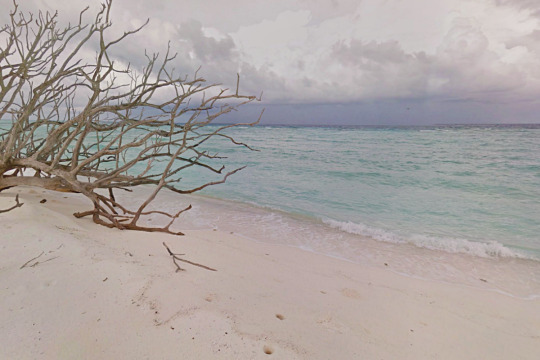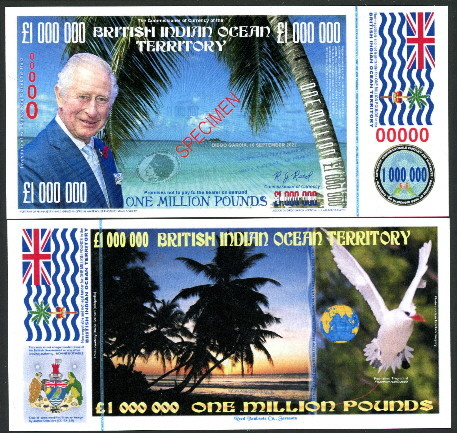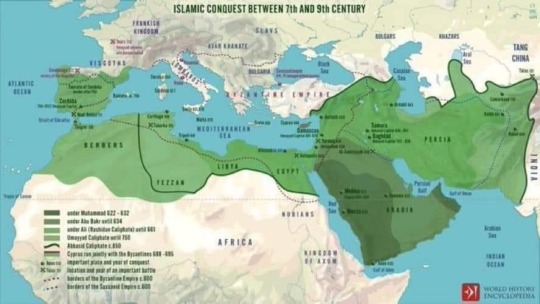#british indian ocean territories
Explore tagged Tumblr posts
Text
The Chagos Islands to Mauritius represents a pivotal moment in a long-standing dispute, it also raises essential questions about justice, identity, and the role of affected communities in determining their own futures.
Know more 👆🏻
#British Indian Ocean Territory#Chagos Islands#Chagos Islands treaty#Chagossian identity#Chagossian Voices community#breaking news#ireland
3 notes
·
View notes
Text
this year's worst british overseas territory award has been split between the falkland islands (covered in landmines, no trees to speak of, pointless war fought over it by margaret thatcher), the pitcairn islands (a third of the population are pedophiles), and the british indian ocean territory (does not actually have a name, source of colonial exploitation via the ".io" domain name's revenue being funneled directly to the mainland). like it has been every year.
3 notes
·
View notes
Text
#uk prime minister keir starmer#united kingdom#chagos deal#uk shadow foreign secretary dame priti patel#mauritius#Mauritian PM Navinchandra Ramgoolam#British Indian Ocean Territory#immigrants#immigration
0 notes
Photo

“And when you emerge from the sea of silence, you will be thunder...”
(from ‘Molchanie: The Silence of God’, by Catherine de Hueck Doherty)
#Grande Île Coquillage#Peros Banhos#Chagos Archipelago#British Indian Ocean Territory#Mauritius#google earth#google maps#google street view#street view#streetview#sea#islands#beaches#quotes#Catherine Doherty#Catherine de Hueck Doherty#meditation#silence#spiritual
0 notes
Text
Chagos islanders stunned as David Cameron rules out return | Global development | The Guardian
British imperialism still going strong. We kicked out the indigenous inhabitants of Diego Garcia in the 60s! It's not even a long time ago. And all so the Americans could build a base there. Now we've reneged on negotiations and stuck two fingers up at the UN so we can continue to deprive these people a home.
0 notes
Text
The British Indian Ocean Territory has no permanent population to benefit from the sale of .io names.
The reason for that is that all the inhabitants were forcibly relocated in the late 60s/early 70s, and the UK government has been preventing them (or their descendants) from returning.
remember .io games? that was 8 years ago
32K notes
·
View notes
Text
#nations of the world tournament#poll#polls#British Indian Ocean Territory#Democratic Republic of the Congo
1 note
·
View note
Text


Private issue, fantasy notes of British Indian Ocean Territory. One million pounds notes.
#exotis#british#indian#for collectors#ocean#territory#pounds#banknote#banknot#fantasy#fantazyjny#funty#not circulated#kolekcjonerski#nieobiegowy#fancy#note#million#queen#king
0 notes
Text

Easter celebration. Printed in the British Indian Ocean Territory in 1973.
1 note
·
View note
Text

Mount Shasta
There’s a well-known legend that says that somewhere deep beneath Northern California’s 14,179-foot-tall Mount Shasta is a complex of tunnels and a hidden city called Telos, the ancient “City of Light” for the Lemurians. They were the residents of the mythical lost continent of Lemuria, which met its demise under the waves of the Pacific (or the Indian Ocean, depending on who you ask) thousands of years ago. Lemurians believed to have survived the catastrophe are said to have settled in Telos, and over the years their offspring have been sporadically reported wandering around the area: seven-feet-tall, with long flowy hair, often clad in sandals and white robes.
Lemurians aren’t the only unusual figures said to inhabit this stand-alone stratovolcano, easily seen from Interstate 5, about 60 miles south of the Oregon border. Mount Shasta is believed to be a home base for the Lizard People, too, reptilian humanoids that also reside underground. The mountain is a hotbed of UFO sightings, one of the most recent of which occurred in February 2020. (It was a saucer-shaped lenticular cloud.) In fact, the mountain is associated with so many otherworldly, paranormal, and mythical beings—in addition to long-established Native American traditions—that it’s almost like a who’s who of metaphysics. It has attracted a legion of followers over the years, including “Poet of the Sierras” Joaquin Miller and naturalist John Muir, as well as fringe religious organizations such as the Ascended Masters, who believe that they’re enlightened beings existing in higher dimensions. What is it about this mountain in particular that inspires so much belief?
“There’s a lot about Mount Shasta, and volcanoes in general, that are difficult to explain,” says Andrew Calvert, scientist-in-charge at the California Volcano Observatory, “and when you’re having difficulty explaining something, you try and understand it.” Calvert has studied Shasta’s eruptive history since 2001. “It’s such a complicated and rich history,” he says, “and Shasta itself is also very visually powerful. These qualities build on each other to make it a profound place for a lot of people—geologists, spirituality seekers … even San Francisco tech folks, and hunters and gatherers from 10,000 years ago. It’s one that can have a really strong effect on your psyche.”
Mount Shasta is one of the most prominent of all the Cascade volcanoes, an arc that runs from southwestern British Columbia to Northern California, and includes Washington’s Mount Rainier and Oregon’s Mount Hood, among others. “It’s so steep and so tall that it even creates its own weather,” says Calvert. This includes the spaceship-looking lenticular clouds that tend to form around the mountain, created, he says, “by a humid air mass that hits the volcano, and then has to go up a little bit to cool off.” But they only contribute to Shasta’s supernatural allure, along with its ice-clad peak, steaming fumaroles, and shape-shifting surface that’s being constantly broken down and rebuilt by ice, water, wind, and debris. The mountain also sits about 15 miles or so west of the standard arc line of the other Cascade volcanoes—a move that took place about 700,000 years ago. “We don’t really have a good explanation for why it moved out there,” Calvert says, a statement that seems to make Mount Shasta’s mysteries appear more otherworldly by the minute.
The Mount Shasta spiritual legacy goes far deeper than contemporary myths and sightings. For Native Americans in particular, the mountain is a sacred place, straddling the territories of the Shasta, Wintu, Achumawi, Atsugewi, and Modoc tribes, which can date their lineages back to a time when eruptions actually took place there. (Its last eruption, says Calvert, was a little over 3,000 years ago.)
There’s Something About Mount Shasta
44 notes
·
View notes
Note
Colonialism is a disease
Imagine being an Arab Muslim and having the audacity to call someone else a colonizer. The illustration below is a snapshot of Islamic colonialism and occupation of other people's lands, from the 7th-9th centuries. Islam went on to attack, destroy, occupy and colonize vast swaths of Europe and southeast Asia, as well as what is now called Turkey.
The world has witnessed many colonial empires since the beginning of time. Most notably, the Mongols, Persians, Greeks, Romans, Babylonians, Egyptians, Islam/Ottomans, Portuguese, Dutch, French, Spanish, British, and American. The only empire that didn't take land, even after winning world wars, were the Americans. They actually gave back the Philippines. But I digress.

All of these empires were in large part, created by bloody conquest, and built on the backs of the newly subjugated. The Hebrews were, famously, slaves in Egypt. No one seems to teach this in the west, focusing more on the Romans, but of all the colonialists, one of the most deadly brutal and expansionist empires were the Muslims aka the Islamists. The Islamic empire expanded by sheer, from Medina (where Muhammad massacred and enslaved the 50% majority Jewish population) all the way into western North Africa, much of Europe, and large populations of Southeast Asia (Indonesia, Malaysia, parts of India now called Pakistan, etc). As it expanded using violence and fear, Islam literally took 100 million slaves out of Africa, and was responsible for one of the greatest mass murders in history: killing 10 million (or more) on the forced march from their homelands to the Middle East.
Some examples of Islamic slavery include the Al-Andalus slave trade, the Trans-Saharan slave trade, the Indian Ocean slave trade, the Comoros slave trade, the Zanzibar slave trade, the Red Sea slave trade, the Barbary slave trade, the Ottoman slave trade, the Black Sea slave trade, the Bukhara (Uzbekistan) slave trade, and the Khivan slave trade from which Islam took millions of slaves out of Persia to the Islamic khanates. There are Arab/Islamic societies today (Libya, a well-known example) that still trade slaves.
Compare this to Israel. Israel/Judea was never colonial nor expansionist. The Hebrews (aka Jews) were often properties of and were subjugated by, colonial empires, including the Islamic colonial empire.
They Hebrews themselves, as noted above, were most famously slaves of the the colonial Egyptian empire, some 4,000 years ago, before being murdered and subjugated by Islam starting in the 7th century. Somehow able to escape Egyptian tyranny through their own efforts (some say, by the grace of Hashem), the Hebrews settled in their current indigenous homeland 3.600 years ago - a small area by global standards, smaller than Belize, Albania, or Montenegro. They were happy there, and even at their peak, did not attempt to force convert others or expand much beyond their lands.
As historian Barbara Tuchman wrote, Israel is “the only nation in the world that is governing itself in the same territory, under the same name, and with the same religion and same language as it did 3,000 years ago.” Despite all the occupations and forced exiles, the Jews/Hebrews/Israelites have maintained a continuous presence in Judea/Israel/Samaria for some 3,600+ years. And even though Israel was granted modern statehood in 1948, it is one of the oldest continuously maintained countries in the world. The 'modern' state of Israel came to fruition post WWII, in 1948; the redefinition of borders and modern statehood after the fall of the big colonials was in no way unusual to Israel. Many country's modern borders came to be defined in the post colonial period (post WWI & WWII). While Israel and Lebanon and Iraq and Iran and Syria and Egypt were all ancient civilizations, dating back thousands of years, modern statehood came in the 20th century: For example, statehood was granted to Egypt in 1922; Saudi Arabia and Iraq in 1932; Lebanon in 1943; Indonesia, South Korea & Vietnam in 1945; Syria & Jordan in 1946; India & Pakistan in 1947; Israel, & Myanmar in 1948; Laos, Libya & Bhutan in 1951; Cambodia in 1953; Morocco, Sudan & Tunisia in 1956; Ghana & Malaysia in 1957; and so on.
The problem is, the tribalism and supremacy of Islam, can't stand that it's once-conquered land is now in the hands of the original owners. Islam believes that once it puts a flag in the sand somewhere, it's theirs.
Oh, and by the way, Andalusia (Spain) is next in Islam's sights.
#islam#colonialism#colonialist#colonizers#israel#secular-jew#jewish#judaism#israeli#jerusalem#diaspora#secular jew#secularjew#Islamic jihad#jihad#Hamas#taliban#Isis#Iran#gaza#Samaria#judea#samaria#judea and samaria#jihadis#hamas#hamas war#iran war#islamists
89 notes
·
View notes
Text

Most people probably don't know this, but .io domains aren't short for Input/Output. They're short for Indian Ocean, and the .io Top Level Domain (TLD) is officially allocated to the Chagos Islands, which are a British territory.
Source 1: MSN
Source 2: dataprovider.com
After a UN decision in 2019 that the United Kingdom should cede the territory to Mauritius, the UK is finally about to get around to it. The treaty hasn't been signed yet, but when it's signed, the British Indian Ocean territory will no longer exist, and the Internet Assigned Numbers Authority (IANA, the people who manage assignment of domains) will retire the .io domain.
The timeline for retirement hasn't even been announced yet, since the treaty hasn't yet been signed, so don't freak out. IANA has a protocol for retiring domains that involves allowing affected parties ample time to migrate.
22 notes
·
View notes
Text
#sri lanka#migrants#tamil migrants#diego garcia#united kingdom#wrongful detainment#british territory#indian ocean#uk-us military base
0 notes
Text
UK Foreign Secretary Has Opportunity to End Ongoing Colonial Crimes

David Lammy, a descendant of enslaved people, has taken office as United Kingdom Foreign Secretary and said he wants to rebuild the UK’s relations with the Global South.
He has an immediate opportunity to meaningfully address the legacies of UK imperial atrocities, starting with an ongoing colonial crime that he could end immediately – the UK’s forced displacement of the Chagossian people.
The Chagos islands, in the Indian Ocean, were governed under UK colonial rule from the island of Mauritius. The Chagossians, an Indigenous people, are the descendants of enslaved people and contract workers.
Over 50 years ago, when nearly all of Britain’s colonies in Africa were achieving independence, the UK and US governments conspired in secret for the UK to hold onto Chagos and to expel its entire population so the US could build a military base on the largest island, Diego Garcia.
As records show, the expulsion of the Chagossians was based on lies and racism, leaving them in extreme poverty. To this day, the UK government refuses to allow the Chagossians to return to their homeland. This forced displacement, racial persecution, and prevention of their return amount to crimes against humanity under international law. Human Rights Watch argued in February 2023 that individuals should be put on trial for the expulsion of Chagossians and that the UK should pay full and unconditional reparations to generations affected by its forcible displacement.
The new UK Government has inherited these ongoing colonial crimes, but could end them tomorrow. UK governments have repeatedly acknowledged for the last 20 years that the treatment of the Chagossians was “shameful and wrong”, but the same successive British Governments have continued to prevent their return.
Tony Blair’s government used the monarchy to issue an ‘Order-in-Council’, bypassing parliament to prevent the Chagossians from returning.
The UK has treated Chagos – now its only remaining colony in Africa – as a law-free zone, claiming international human rights law and international criminal law do not apply there. The racism is clear: the UK applies human rights law in other overseas territories like the Falklands and on Cyprus, where the inhabitants are of European origin and live freely close to military bases.
21 notes
·
View notes
Photo

“Another world is not only possible, she is on her way. On a quiet day, I can hear her breathing.”
(Arundhati Roy)
#Grande Île Coquillage#Peros Banos#Chagos Archipelago#British Indian Ocean Territory#Mauritius#animals#birds#google earth#google maps#google street view#street view#streetview#quotes#Arundhati Roy#meditation#silence#spiritual
0 notes
